Each of the questions below relate directly to the question of how the nervous system actually communicates when it is working.
![[snort]](../psy101graphics/04snort.jpg)
![[runners]](../psy101graphics/04runners.jpg)

-
Why does cocaine (and "speed" [= methamphetamine]) make some people feel very euphoric and some people very crazy?
-
Why do some runners report that they feel extraordinarily good after a very long run?
-
Why do soldiers in war who have been wounded sometimes not actually realize they've been hurt?
![[MS]](../psy101graphics/04MS.jpg)
![[Nerve Gas]](../psy101graphics/04NG.jpg)
![[No-L-ITA]](../psy101graphics/04NOLITA.jpg)
-
What is multiple sclerosis? What is Parkinson's disease?
-
During the 1980s, the Iraqi Army under the command of Saddam Hussein used nerve gas regularly in suppressing civil war and against the Kurds and the Iranian Army. Similarly the Syrian Army used nerve gas (a chemical weapon) against women and children during the civil war between 2013 and 2018. Why do nerve weapons kill many of the people who breathed the gas?
-
How are eating disorders possibly related to some types of suicidal acts?
1. Nervous Tissue: The Basic Hardware
The basic "nerve cell" is call a neuron
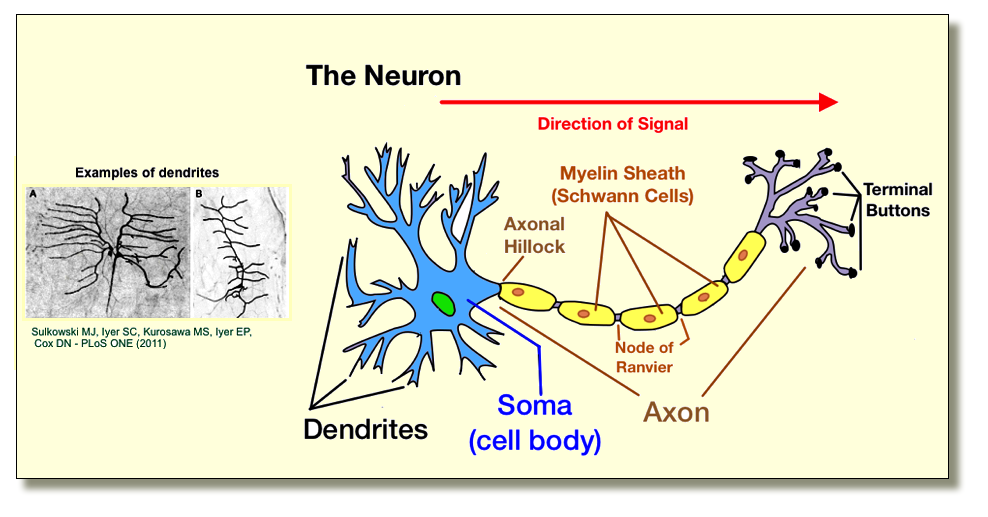
- Dendrites: receive signals from other neurons. Often a neuron has many dendrites (= branches of a tree)
- Soma (= cell body): produces some neurotransmitters. In the center is the nucleus with the cell's DNA.
- Axon
- For all neurons, there is only one axon which sends a signal to other neurons beginning at the axonal hillock and ending at the terminal buttons. Terminal buttons synapse (connect to) the dendrites of other neurons.
- The axon is covered with insulation called myelin
- Outside the brain and spinal cord, the myelin is produced by Schwann cells wrapping themselves around the axon. This covering is usually called its myelin sheath.
- The Schwann cells are separated by very small gaps which expose the membrane of the axon itself. Those gaps are called Nodes of Ranvier.
- Inside the brain and spinal cord, glial cells (see below) wrap their arms around the neuron with a myelin covering.
- In the brain/spinal cord there are about 86 billion neurons (about 60-70 billion in the cerebellum alone)
Glia (="Glue")
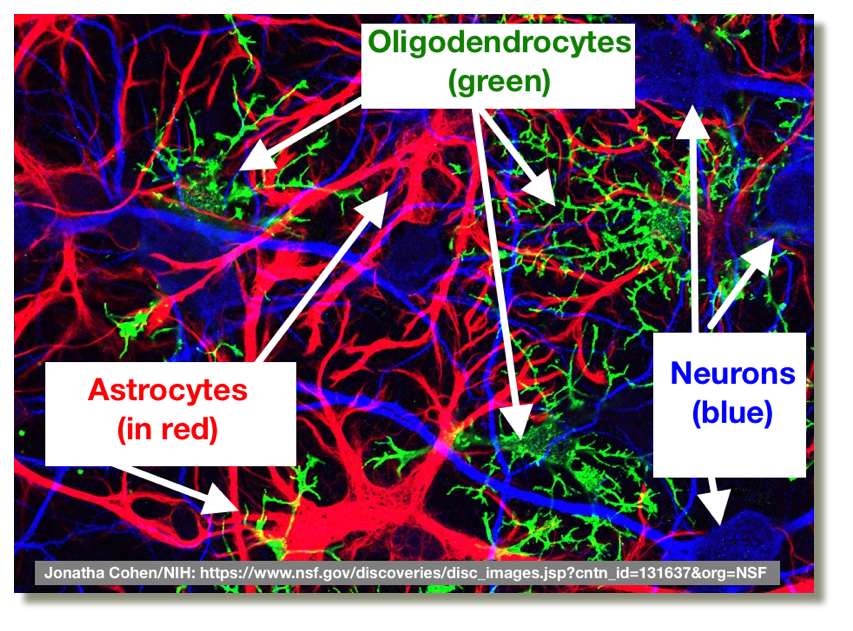
- Cells in the brain which provide structural support for the neurons in the brain. They tend to hold these neurons in their proper place.
- They also nourish and decontaminate (remove waste from) neurons.
- Recent evidence shows that they have a clear role in modulating how neurons transmit and receive signals
![[Resting Potential]](../psy101graphics/restingpotential.jpg)
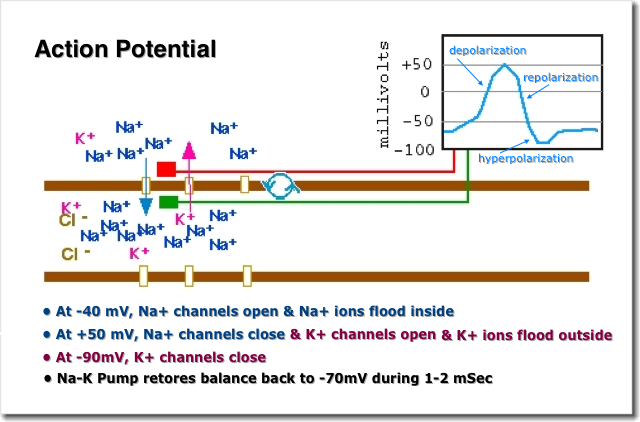
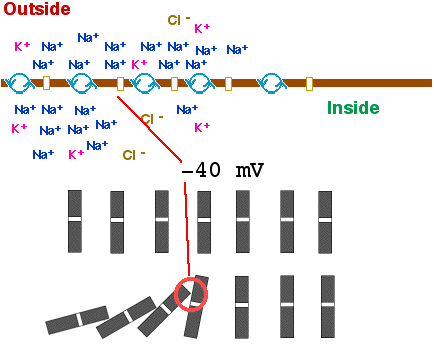
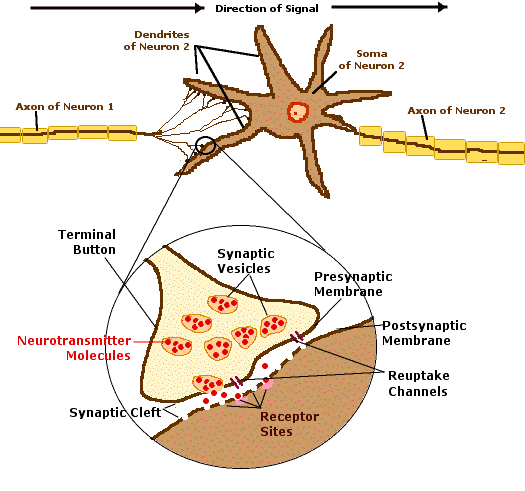
![[Pert &
Snyder]](../psy101graphics/pert_snyder.jpg)